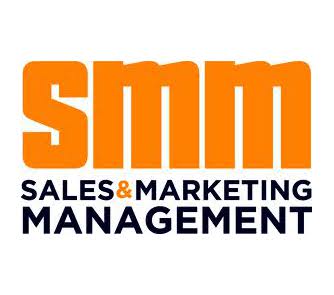The question posed in the headline regarding your B2B website is becoming increasingly important as buyers continue to change their habits alongside our advancing technology.
According to a recent CSO Insights study, “The Growing Buyer-Seller Gap,” nearly half (44.2%) of participants surveyed indicated that they identify a solution before they ever engage a salesperson.
This finding reveals a large majority of your target buying audience is finding other means to research their solution options. And, you can probably guess it: Your website plays a major role in whether or not these buyers decide to engage your salespeople.
For the most part, the aesthetic and branding of many B2B company’s websites are top-notch and commendable. And in more websites than not, any visitor can sense the pride the company has for its solutions and offerings.
But as a recent Forrester study has found, there is also a growing gap between B2B websites and the engagement of their content.
B2B Sellers Are Still Failing to Engage Their Buyers
The Forrester study analyzed and graded 60 B2B websites based on 15 criteria related to whether or not the site’s content was engaging.
The “students” did not fare well on the test: Only four out of 60 of the websites received a passing grade — and this was after Forrester lowered its standards from the year before by five points.
4 out of 60 B2B websites failed Forrester Research engagement test in 2019.
In fact, Forrester has actually uncovered that B2B content engagement is not improving but is getting worse: In 2017, the engagement test had only six passing websites.
So what about those 56 websites with failing grades? The main issues revolved around the content:
- Orienting toward the company and its products rather than customers.
- Relying on industry or brand jargon.
- Lacking a human and relatable voice.
This obviously common issue is not exclusive to just B2B websites either. It is for the above reasons that many buyer-seller conversations – electronic, via phone or in-person – fail to serve either party.
Failing to Engage Applies Across the Board of Buyer Communications
Sellers are missing opportunities to engage buyers in more areas than their websites. Conversations are not hitting the right notes. Business proposals are lacking the right story.
Buyers are eager for a trusted advisor to understand them, focus on them, solve their problems — but still too many B2B organizations and their salespeople head in with a stale, ignorable messaging framework: Here’s our solution. You should buy from us. We’re great. Trust us.
An Engaging Formula For Buyer-Facing Content
All customer-facing teams, including sales, must do better at engaging buyers. While “engaging the buyer” may seem like an intangible goal, Mereo has achieved an effective formula that can be applied across situations, across functions for managing it.

This is the pain, solution, gain, proof framework.
Pain
For any engagement to be worthwhile for either party, your buyer must have a known (over often unknown) pain that you will help them overcome. Though in many social situations, we try to gloss over issues and problems, in a buyer-seller conversation, it is important for the seller to not only touch on the pain but to shine a spotlight on it by stressing the failures, roadblocks and future frustrations it has and will continue to cause. These pains need to be specific for the target audience and real, and that means listening to your buyer and keeping an eye on industry news. And while it may feel uncomfortable being the bearer of the business pain, the buyer should not need to worry about their pains for much longer, because your solution will directly address them – but only if you bring it to their attention.
Solution
Most B2B sellers can quickly tout their solution facts and figures: “It has this feature and this is the evolution of how great it is. It can make miracles happen! It is amazing!” But without knowing how these miracles could directly apply to their business, buyers will not engage. You must be specific about the elements of your solution that are relevant for their “unique” situation? How will it help? How will it sustain its support? Then you can get into the features that back up these benefits, but try not to spend too much time on that.
Applying how your solution can solve your buyer’s pains is part of it; you must also differentiate your solution from the competition, the one thing that you can lay claim to that no other sellers can. And, you got it: Show how that one thing can be the golden ticket to solving their pains and reaching their goals.
Gain
In the pain section, you emphasized what could go wrong if the buyer continues as-is. Now it is equally important to paint a picture of what they could achieve by using your solution. The gain is more than overcoming the pain — it is reaching goals, trumping competition, gaining an unfair share™ of the market. It is something specific and desirable for your buyer. And it is all in reach with your help.
Proof
For any investment, we want a guarantee. “So you say,” thinks the buyer, “but will your solution really work?” Before you have fostered a relationship as a trusted advisor, you must have proof on hand. Through client value stories, client testimonials and solution demonstrations, you are able to show your buyer that others have had similar pains, and because of your solution and your solution alone (with its differentiators) they were able to overcome and to thrive.
For an example of an effective form the proof element can take, I welcome you to explore Mereo client success stories.
PROOF










